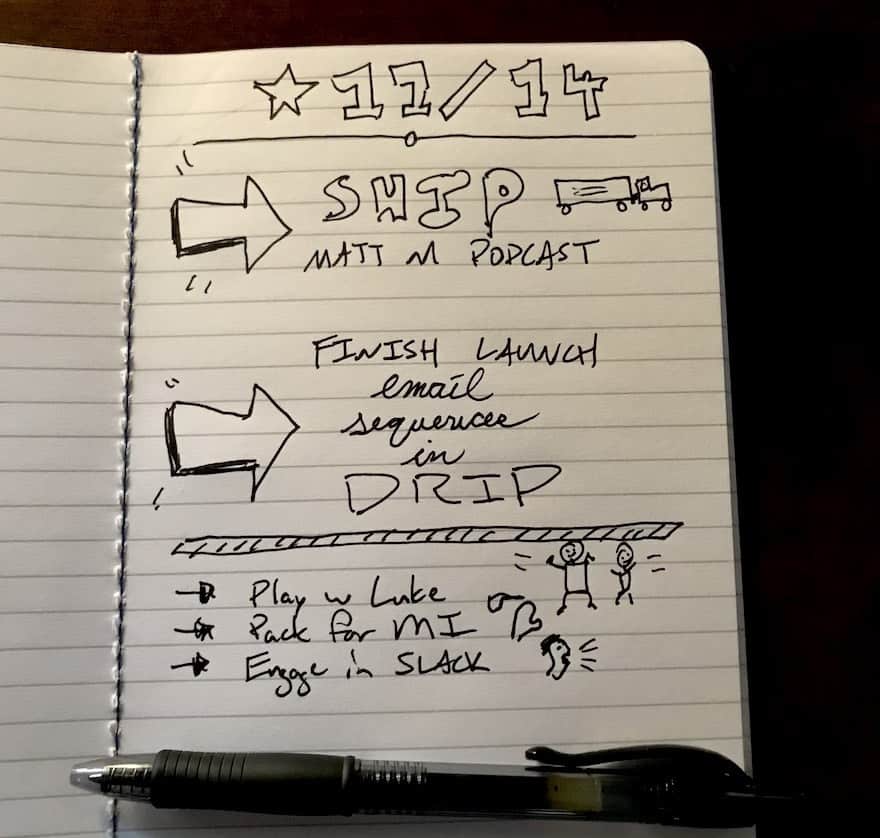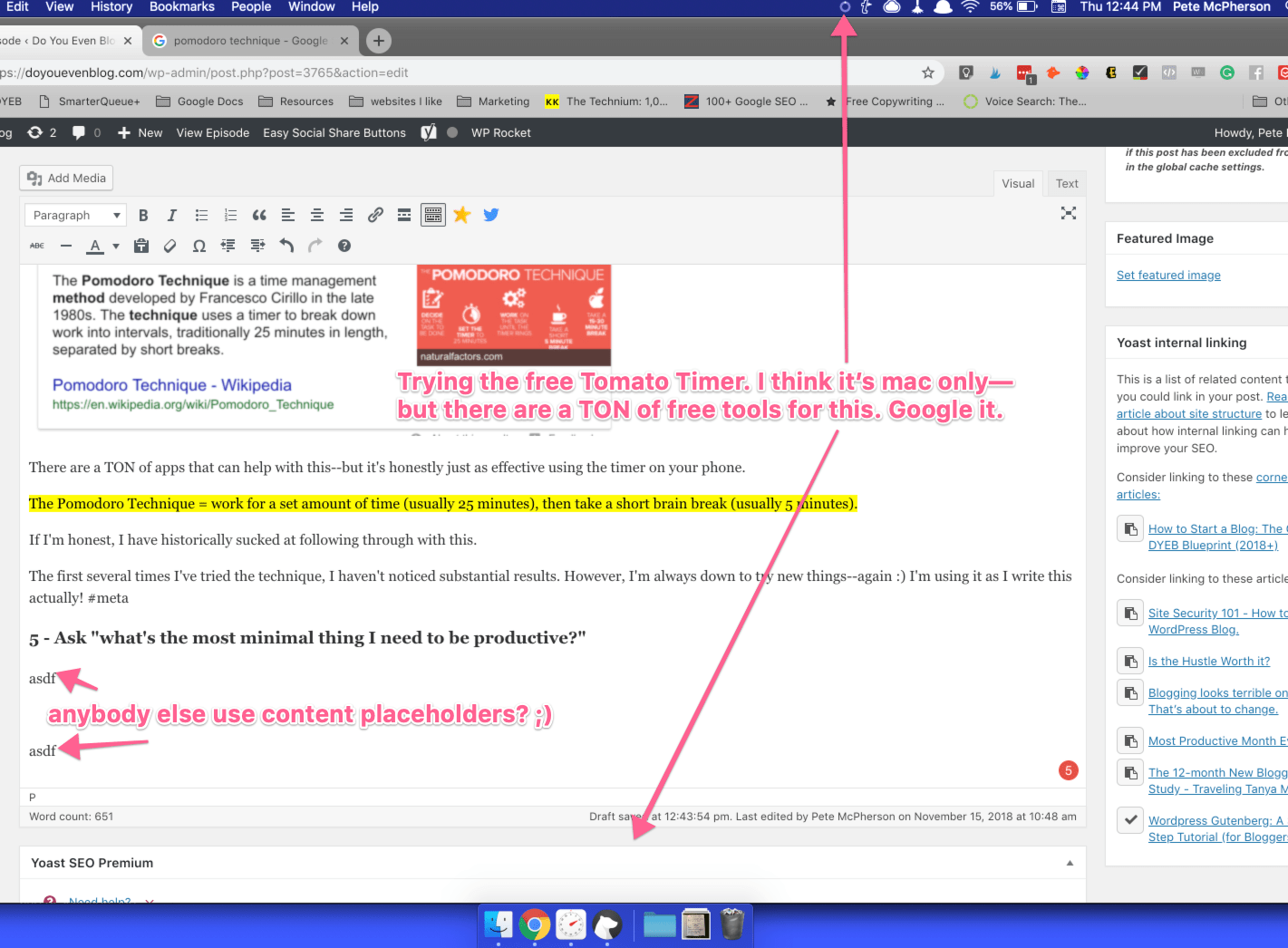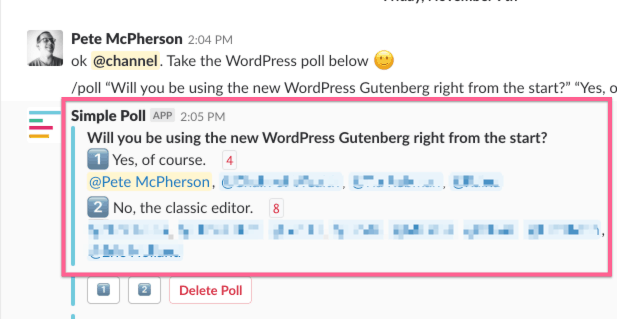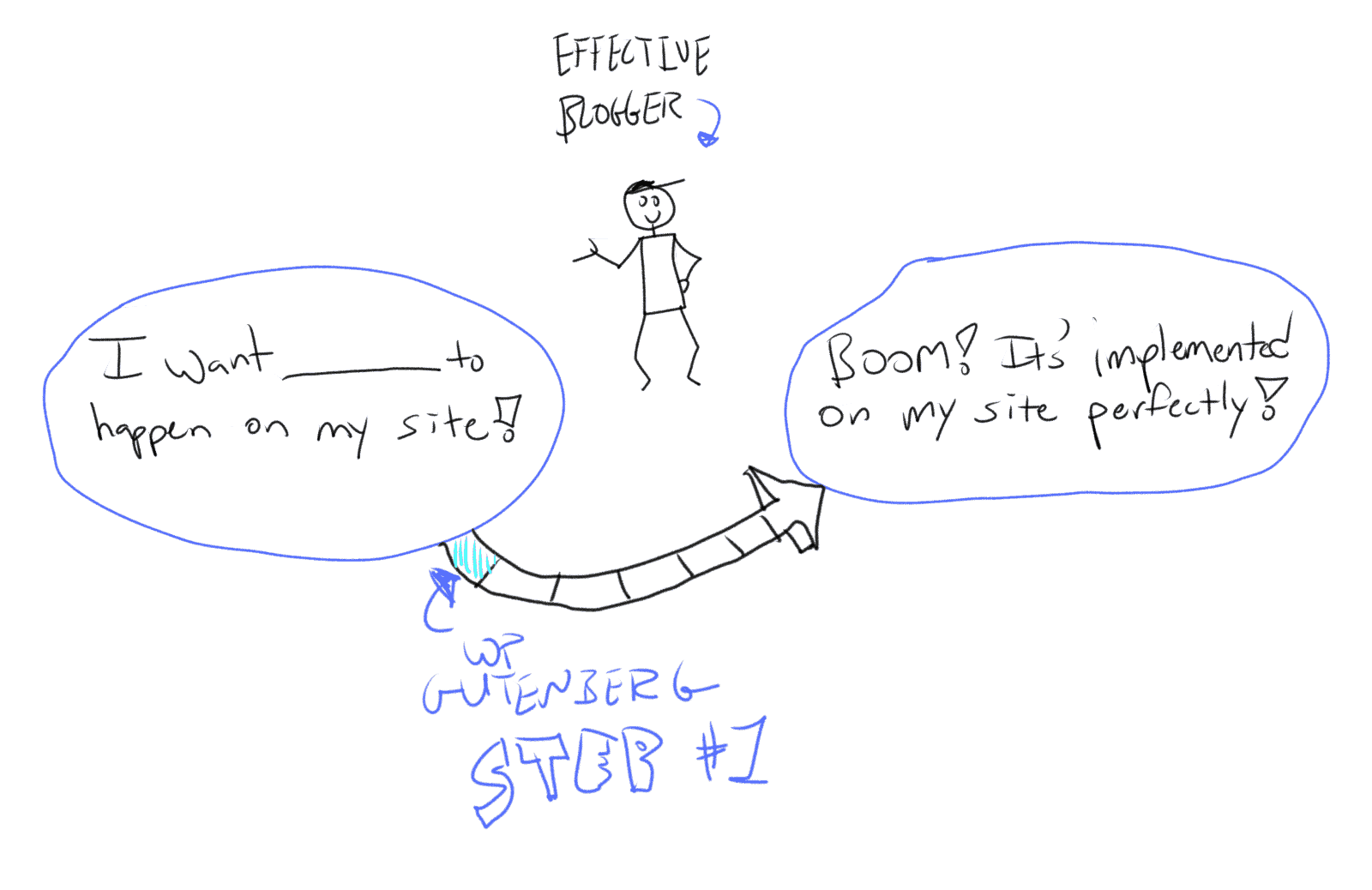Blog ttribe! Below are my ttakeaways from my podcastt chatt with none other than Matt Mullenweg, the founding developer of WordPress and CEO of Automattic–which is spelled correctly ??–the billion-dollar company behind WordPress.com, Jetpack, Akismet, WooCommerce, etc. Who needs a second sentence worth of bio after that??
To be honest, I HAD traditional show notes here.
In good Pete form—I got bored and deleted them 🙂
In their place below are what I think Matt would prefer to be written here—rather than “5 insane productivity tips from the creator of WordPress” or “How to start a billion-dollar company and literally change the internet forever.”
#blogging.
I want to talk:
- Productivity tips—Matt really did drop some nice bombs on focus and organizing.
- What to expect in WordPress 5.0 and why you SHOULD switch to the Gutenberg editor.
- What the future of blogging will look like (mainly Pete’s ideas extrapolated from this chat with Matt)
Let’s dive in.
5 insane productivity tips from the creator of WordPress.
Sorry, couldn’t help but use that headline now 🙂
As you’ve probably figured out, working for yourself—or working remotely—tends to bring challenges with it.
- There’s no boss making sure you do the work.
- You’re responsible for your own productivity.
- Distractions are everywhere and more “available” than ever.
Here are few quick thoughts from this chat with Matt:
1 – A pen and paper
When we started talking about productivity, that was Matt’s initial response to how he stays focused and organized.
Whenever he sits down to work–he grabs his notebook and jots down what he wants to get done.
Yes, that is, in fact, the most basic to-do list one could dream up–but still surprisingly effective.
My takeaway? You don’t necessarily NEED a fancy to-do list app, coupled with project management software, etc. There’s no “productivity hack” for organizing what needs to be done and then doing it.

I’ve started doing this more and more in a sketchnote format, based on this fun new book I picked up.
2 – Programming your brain with music.
This is something I’ve been experimenting with lately.
The idea is to trick your brain into a certain state–using music as the trigger.
3 Examples:
When I’m facing a task I really do NOT want to do, I’ll put on my “angry work” playlist on Spotify.
This signals to my brain “Yo brain! It’s totally cool to NOT want to do this work right now–but you should sit your butt in a chair and knock it out anyway. Do the work.”
Music = Nine Inch Nails, Rage Against the Machine, Audioslave
When my brain is starting to fry and I KNOW I should wind down work and switch gears–even though I want to keep working–I’ll put on my “chill it’s time to breathe” playlist.
This signals to my brain “Yo Type-A personality brain! You’ll be a lot happier and fulfilled if you allow yourself to wind down now and sharpen the axe.“
Music = Beck’s album Morning Phase
I’m essentially trying to “program” my brain and mood in order to accomplish certain objectives, using the same playlists over and over again.
3 – Listen to one song on repeat
This sounds like it could be seriously miserable, but it’s not. It’s awesome.
Both Matt and Chris Sacca have said they do this.
Don’t knock it till ya try it.
4- Matt uses the Pomodoro technique

There are a TON of apps that can help with this–but it’s honestly just as effective using the timer on your phone.
The Pomodoro Technique = work for a set amount of time (usually 25 minutes), then take a short brain break (usually 5 minutes).
If I’m honest, I have historically sucked at following through with this.
The first several times I’ve tried the technique, I didn’t notice substantial results. However, I’m always down to try new things–again 🙂 I’m using it as I write this actually! #meta

5 – Ask “what’s the most minimal thing I need to be productive?”
Let’s get one thing straight…
YOU DON’T NEED a perfect productive setting to be productive.
When I want peak productivity, here’s my ideal setting:
- no kids
- at a coffee shop–with fiber internet
- with mug of black coffee
- with my headphones on
- wearing comfy sweats
- and comfy socks
- having already stretched my legs and back for 10 minutes
The total number of hours a week I can manage all 7 of those?
Maybe 2 hours.
*
So what’s the minimum I need to be productive?
My laptop, a place to sit or stand and type, and an internet connection.
Theoretically, I can be equally productive with just those two things.
Waiting for the ideal setting to sit down and attempt work is just resistance at work (Stephen Pressfield reference from my fave book). This is the real “secret” to getting more done, in my opinion. Don’t wait for “prime productive conditions.”
Train yourself to sit and work whenever the opportunity presents itself.
What the future of blogging looks like:
Right after I got off the call with Matt, I took this question to the Blogger U Slack group:

If you haven’t heard already, the next major update drops later this month, November 2018, and with it comes the opportunity to use the new editor, Gutenberg.
Most WordPress users are less than excited, and I get that. It’s not perfect software, and it brings a new learning curve to drive around.
Totally understandable, right?
“WordPress’s mission is to democratize publishing.”
Matt mentioned that in our chat in response to “Why Gutenberg?” Why change things on us?“
All WordPress changes are designed to make it easier for us to publish content effectively.
This brings comfort to me personally, and I’d like to tell you why.
Answer this:
Have you ever wanted to accomplish something on your blog–but struggled to implement it?
Perhaps it was a design you really loved from a blogger you look up to–and it took you several hours to even get close to replicating it.
Maybe it was a fancy marketing function–the perfect looking opt-in form for your newsletter–but you struggled with getting it designed and embedded JUST where you want it…
WordPress Gutenberg is the first step on a long journey to SHORTEN THE GAP between you having an idea of something you want to happen on your site–and actually having it happen.

Does that make sense?
- Is Gutenberg perfect? Of course not.
- Is it going to be annoying to switch editors? YES.
- Is it a step in the right direction? I certainly think so.
Here’s my manifesto:
Yes, getting a website set up, designed, and working is easier than ever before! But it’s going to get even easier.
In the future, you will not be held back by your limited knowledge of HTML and CSS, or from expensive plugins historically available to brands and experienced money-making bloggers.
- You’ll have all the tools they have.
- You’ll have every opportunity to design and format your content as the “pros” do.
WordPress Gutenberg is a big step in bridging that gap.
Why does democratization matter?
Once brand new bloggers can quickly and easily go from idea to implementation–what does that mean?
What will distinguish people?
Content 😉
*
Question for you–will you be switching over to the new Gutenberg editor later this month? Comment below!
I’d love to hear your thoughts.

